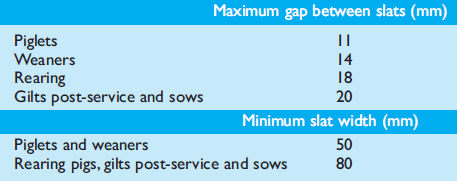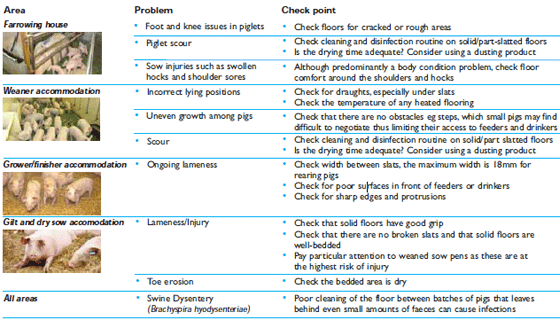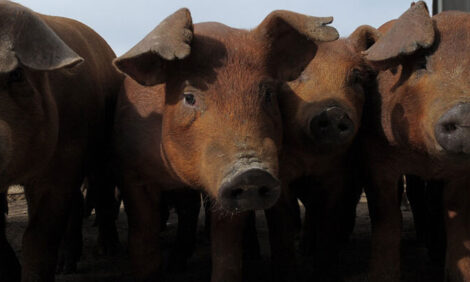



Flooring
Advice on floor types and maintenance to reduce leg problems and improve health and hygiene in no. 37 in the 'Action for Productivity' series from BPEX.For pig welfare and health, flooring must be smooth but not slippery and designed, constructed and maintained so as not to cause injury or suffering to pigs standing or bedding on it. Flooring must be suitable for the size and weight of pigs and, where no bedding is provided, must form a rigid, even and stable surface.
Where bedding is provided, it must be clean, dry and not harmful to pigs.
Targets
- reduce lameness with well-maintained floors
- improve health and hygiene, and
- adopt an 'all-in all-out' programme for each floor space (where practical)
In UK grower and sow accommodation, it has been shown that there is less lameness in pigs housed on solid floors with bedding than in those housed on slatted floors. However, fully slatted accommodation does offer benefits to pig health, hygiene and a reduction in cleaning time.
Problems associated with poorly maintained flooring include:
- general lameness
- torn claws
- abrasions
- septic arthritis
- abscesses
- vice
- Greasy pig disease
- reproductive issues/mating injuries
- teat and udder damage
- overlaid piglets
- splayleg in piglets
- joint ill (through scuffed knees in piglets)
Assess the situation on your unit and try to reach a balance with optimal conditions for pigs:
- Ensure the floor type is suitable for the age and weight of the pigs
- Assess the location, size and suitability of the sleeping area, it should be dry and draught free
- Check pens for sharp and projecting edges, especially at the bottom of doors and gates
- Examine the flooring for rough areas. Pay particular attention under drinkers and feeders. Corrosion is common in areas where different floor materials meet (eg metal and concrete)
- Check the condition of the slats, particularly the edges and note the width of the solid and void sections
- Examine the condition of steps and gate separations
- Check gates are hung correctly
- Examine building supports for any damage caused by the pigs
- Examine the hygiene of pens, note the location of the area used by the pigs for dunging
- Review the slurry system and cleaning and disinfection programmes in place on farm
- Routinely inspect all areas and note scheduled repairs
- Piglets are prone to abrasions on all floor types, so regardless of the type used in the farrowing house, check and maintain it regularly.


Floor Types
Fully slatted (plastic)

- Easy to wash and dry
- Achieves best separation between pigs and faeces
- Quick drying times
- Impermeable
- More expensive than most flooring
- Can lead to sole bruising and abrasion on knees in piglets
- More damaging when wet
Part slatted

- Provides a dedicated (solid) lying area
- Better drainage in farrowing pens than solid flooring
- Solid area can quickly become messy if ventilation is not optimal or airflow is incorrect, as pigs will dung in the wrong area
- Pigs tend to have more lesions than those housed on solid floors but fewer than those on fully slatted floors
Fully slatted (concrete)

- Cheaper than plastic slats
- Often used for heavier pigs as they have good weight bearing properties
- Slower to dry than plastic slats
- Partially absorbent, leading to a risk of residue
- Slats can be 'eaten away' by liquid feed and acid
- Finisher pigs tend to develop more bursitis on concrete slats than those housed on solid floors
Solid (concrete)

- Predominantly used with straw
- Drainage can be a problem if the slopes are not correct
- Can lead to knee abrasions in suckling piglets
- Poorly-laid concrete can become slippery and/or rough
- Concrete must be laid in appropriate weather conditions
- Insulation, construction and laying all influence quality and durability
- Fewer issues with lameness than seen in pigs housed on slatted floors

June 2013








